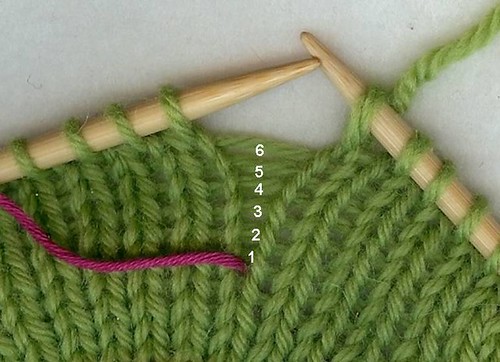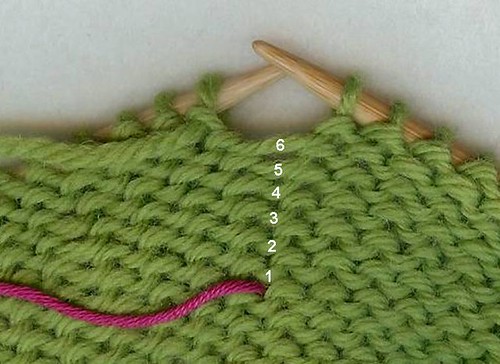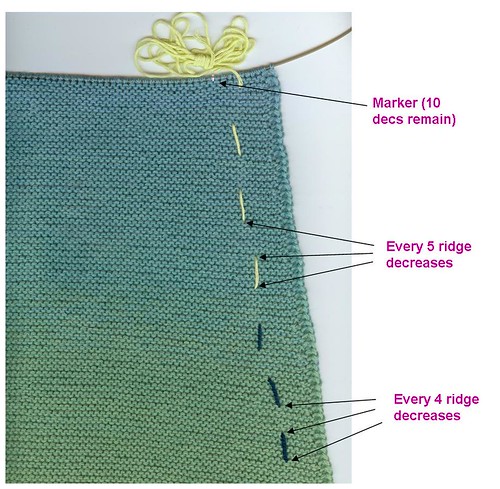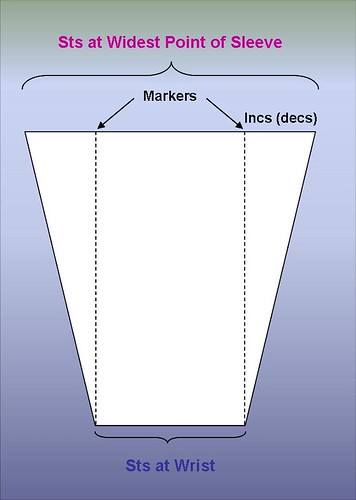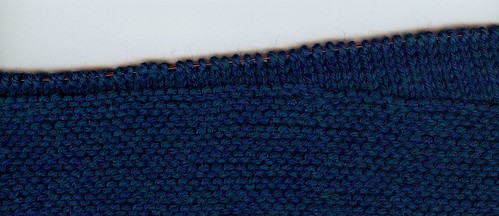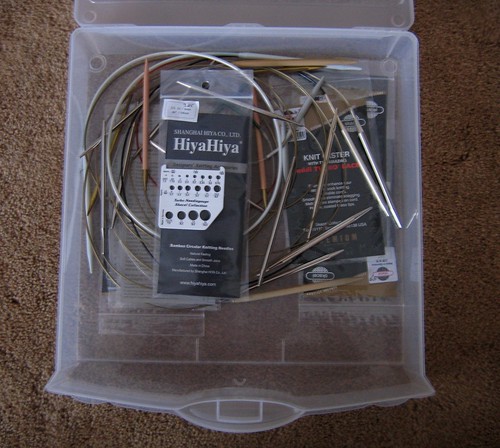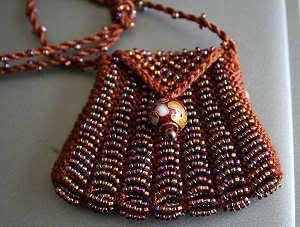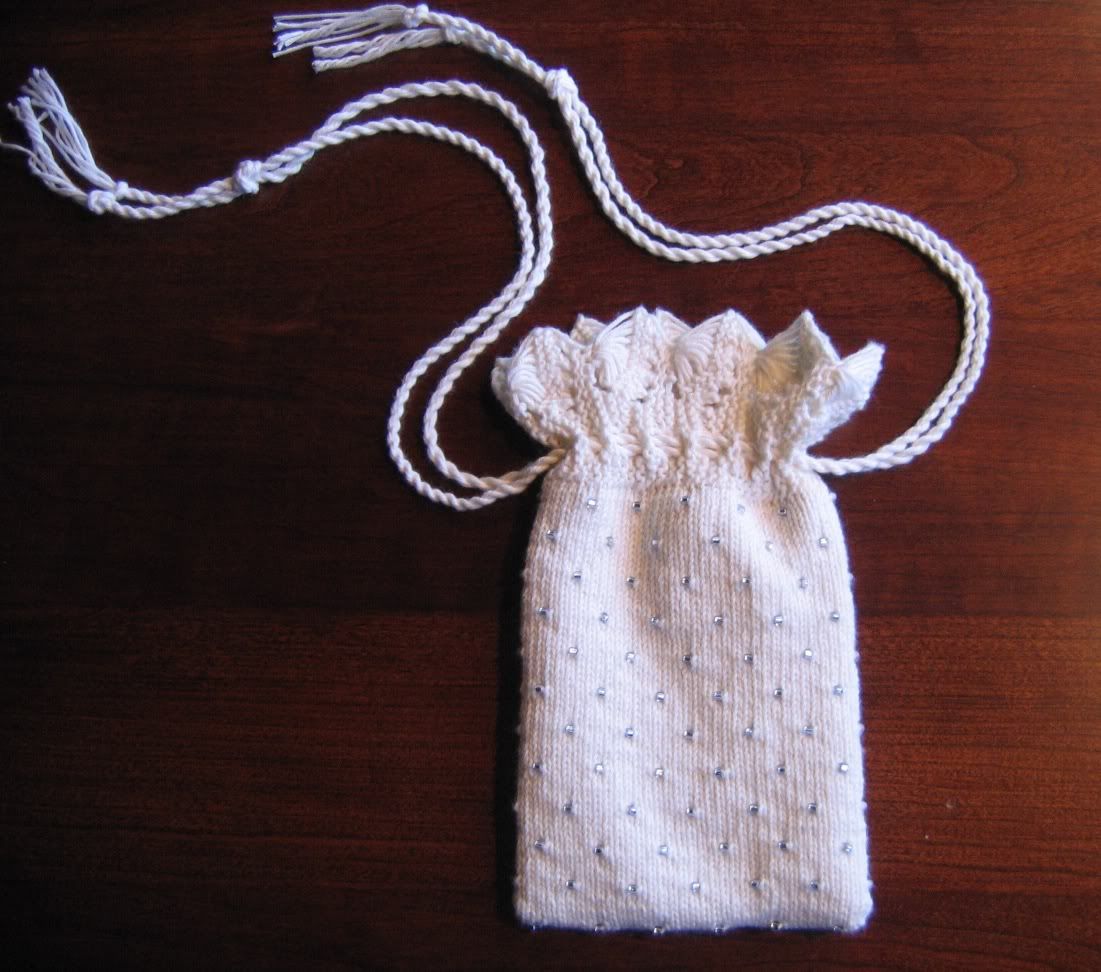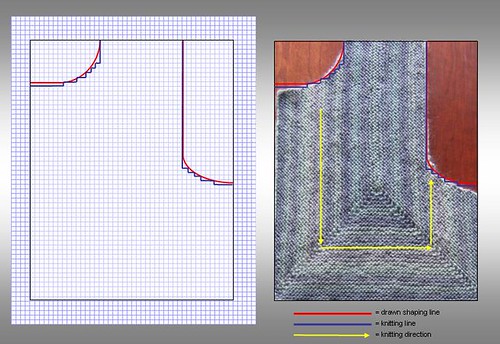I’m supposed to be doing many things: writing up the Topsy Turvy Moebius Pattern (coming soon), working on my Christmas knitting (is it really almost November?), writing, making my son work on his college essays, cleaning, etc. Instead, I got distracted and knit something that wasn’t on “the list.”
A couple of years ago, some friends had their first baby and I knit them a wonderful fair isle baby blanket. They’re expecting again in early December, and I wasn’t planning on knitting something for the second baby but then I started — as a middle child — to feel a bit guilty. Didn’t this baby deserve a blanket all her own? I didn’t have time to knit one as complicated as the one I’d done the first time, so I made a quick little Tweed Baby Blanket, designed by Jared Flood.
I know they’re expecting a girl, so I hunted in my stash and found two colors of Rowan’s Cash Cotton: purple and pink. Soooo girlie. But those were my daughter’s favorite colors until about the age of five or six, so I figured I couldn’t go too wrong.
Here’s the finished product.


As I often do, I made a slight change to the pattern. This change was necessitated by my crappy knitting. Really. I had finished the blanket and picked up stitches all around it for the border. My pick up was horrible. Truly horrible. See:

Look at that edge. Ghastly. I think the problem was that in order to get the proper drape for the blanket, I used a 7 U.S. needle. That’s fine, but it made the edge floppy. Usually, when I pick up along garter stitch, I pick up in the “nubs,” but that didn’t quite work here because of how many stitches I needed to pick up. I tried to pretend I could live with it, but I couldn’t. I would have been embarrassed to gift this blanket with that sloppy looking edge.
To correct the problem, I picked up my stitches in the blanket fabric. That give me a very nice, firm defined edge. However, doing that kind of pick up means that the pick up is not at all attractive on the wrong side of the blanket. Although this blanket isn’t completely reversible, I wanted it to look nice on both sides.
I purled my first row to better mimic the border’s lace pattern and to disguise the pick up. Then, after knitting two or three rows in stockinette, I took a new ball of yarn and a new needle and picked up all the way around again in the purl bump of my pick up on the wrong side of the blanket.


If you look carefully at those pictures, you can see that I picked up by going from the top of the stitch into the bottom (the opposite of what I would usually do) so that it would look as if I had purled a row. That way, it matched the right side. I then purled several rounds to create stockinette stitch. I now had two stockinette facings surrounding the edge of the blanket.

On the next row, I knit the two facings together by putting the needle through one stitch from each facing and then knitting them as one stitch.

This is how it looked when I completed that row:

And here is the wrong side of the completed border.

It’s a nice easy way to create a finished facing. It would work well on a sweater knit in fine yarn.









